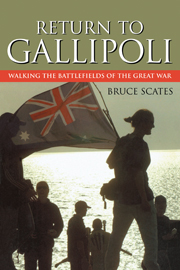Book contents
- Frontmatter
- Contents
- List of illustrations
- Note on money, measurement and terminology
- List of abbreviations
- Acknowledgments
- Introduction: journeys into history
- Part I Loss, Memory, Desire
- 1 The unquiet grave: imaginary journeys
- 2 Hearts of stone: creating the cemeteries of the Great War
- Part II Family Journeys
- Part III Soldiers' Tales
- Part IV Testament of Youth
- Conclusion: journey's end
- Epilogue: The ghost of memory
- Notes
- Survey Informants
- Index
1 - The unquiet grave: imaginary journeys
Published online by Cambridge University Press: 22 September 2009
- Frontmatter
- Contents
- List of illustrations
- Note on money, measurement and terminology
- List of abbreviations
- Acknowledgments
- Introduction: journeys into history
- Part I Loss, Memory, Desire
- 1 The unquiet grave: imaginary journeys
- 2 Hearts of stone: creating the cemeteries of the Great War
- Part II Family Journeys
- Part III Soldiers' Tales
- Part IV Testament of Youth
- Conclusion: journey's end
- Epilogue: The ghost of memory
- Notes
- Survey Informants
- Index
Summary
On 2 December 1915 Major G. F. Stevenson, Commanding Officer of the 6th Australian Battery at Gallipoli, wiped the grime from his hands and wrote a letter home to Australia. It began in the way so many others did, bearing the most personal of messages to a woman he would never meet. ‘It is with extreme regret that I find myself called upon to write to you giving details of the death of your son …’
Brian Lyall had been killed on 29 November. That day Turkish artillery swept the gullies and the ridges, pounding the Anzac position and breaking crucial communication lines with the beach. Major Stevenson detailed Gunner Lyall to find the break in the telephone wire and mend it. Though ‘fully aware of the danger’ the young soldier went on his mission ‘without hesitation or complaint’. Somewhere in the trenches Lyall was ‘struck down’ by a shell and buried alive.
It took them several hours to prise Gunner Lyall from the earth, several hours more to carry his broken, bleeding body to the field hospital on the beach. And although Major Stevenson broke the news as gently as he could, it was clear that it took Mrs Lyall's son several hours to die:
I … was informed that the poor lad had passed away at [2 am] that morning … This news, I assure you, was a great shock to me, as [I thought] his wounds would soon mend and that he would in all probability be sent home. However God's will was otherwise.
- Type
- Chapter
- Information
- Return to GallipoliWalking the Battlefields of the Great War, pp. 3 - 33Publisher: Cambridge University PressPrint publication year: 2006



